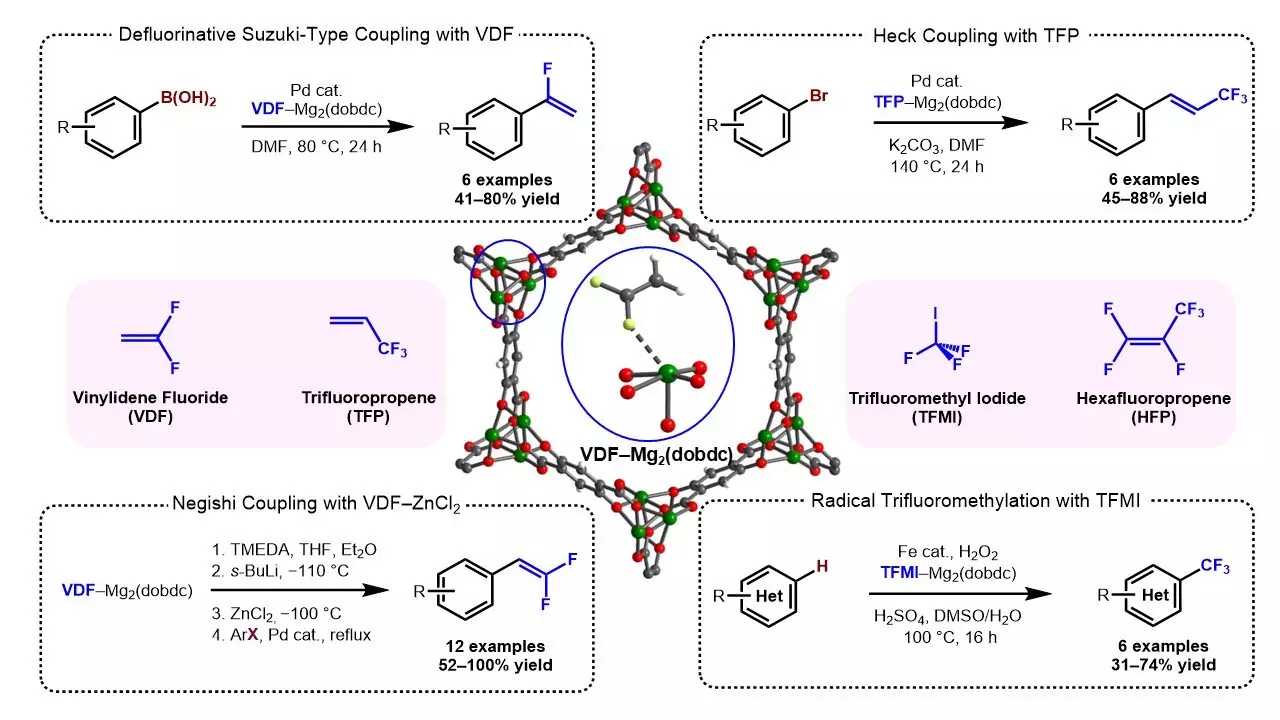Chemists from Cornell University, the Korea Institute of Science and Technology, and Southern Methodist University have made a significant breakthrough in handling fluorinated gases, which are known to be highly hazardous. In their study published in the journal Science, the research team explores the potential of using metal organic frameworks (MOFs) as a safer and cleaner alternative. This innovative approach offers promise in overcoming the challenges associated with the delivery, usage, and storage of fluorinated gases.
Fluorocarbons, commonly used industrial chemicals, pose serious risks due to their flammability, toxicity, and contribution to ozone depletion when released into the atmosphere. Traditional methods of handling these gases require specialized equipment and precautions. Therefore, researchers have long recognized the urgency of finding a more efficient and secure alternative.
Metal organic frameworks are versatile compounds composed of coordinated organic ligands with various structures. The research team focused on identifying an ideal MOF that would possess high gas sorption capacity, stability, and the ability to interact effectively with fluorinated gases. After testing 12 different MOFs, they identified one called Mg2, which exhibited strong interactions with multiple fluorides and demonstrated both durability and stability. Remarkably, it remained stable even when left on a benchtop for a week.
Using the Mg2 MOF, the chemists developed gas-MOF reagents that effectively contained the gas for extended periods without any detectable leakage. Moreover, they discovered that embedding the reagents in wax allowed for safe storage of the gases for up to two months. By subjecting the wax-embedded MOFs to sonication, the gases could be easily released when needed. This breakthrough provides a practical and efficient method for accessing fluorinated gases in a controlled manner.
The successful utilization of MOFs in the storage and controlled release of fluorinated gases opens up numerous possibilities in various industries. The technology could revolutionize the safety and efficiency of handling these hazardous compounds, allowing for improved delivery methods and safer storage. Future research in this field could focus on exploring the suitability of different MOFs and optimizing the conditions for maximum gas storage and release.
The recent study conducted by chemists from Cornell University, the Korea Institute of Science and Technology, and Southern Methodist University demonstrates the potential of metal organic frameworks in providing a safer and cleaner approach to the handling of fluorinated gases. The development of the Mg2 MOF, with its remarkable stability and gas sorption capacity, offers opportunities for significant advancements in gas storage and controlled release. This breakthrough paves the way for improved safety standards and greater efficiency in industries relying on fluorinated gases. With further research and development, metal organic frameworks could revolutionize the way we handle these hazardous compounds, minimizing their risks and environmental impact.


Leave a Reply